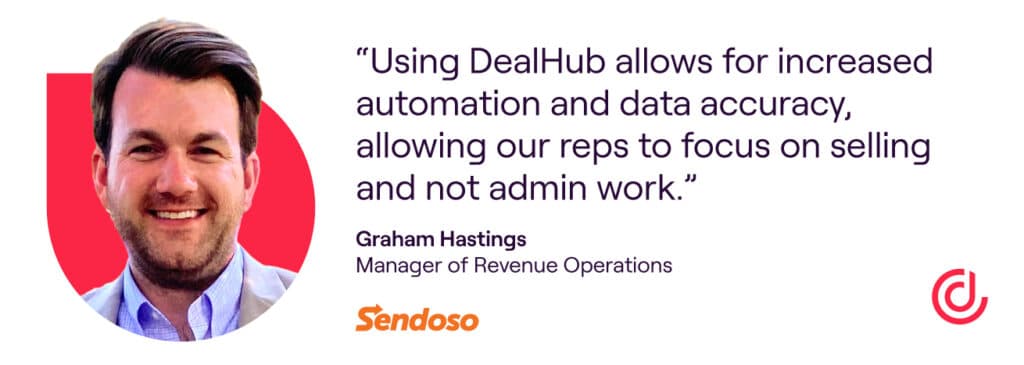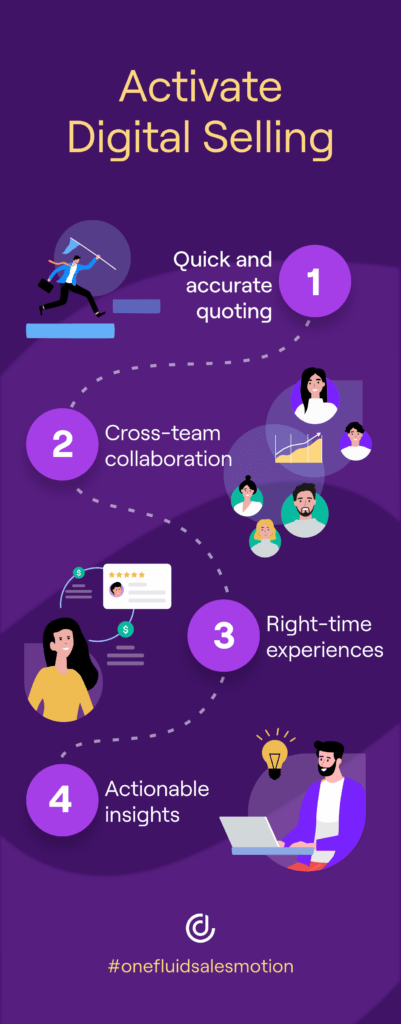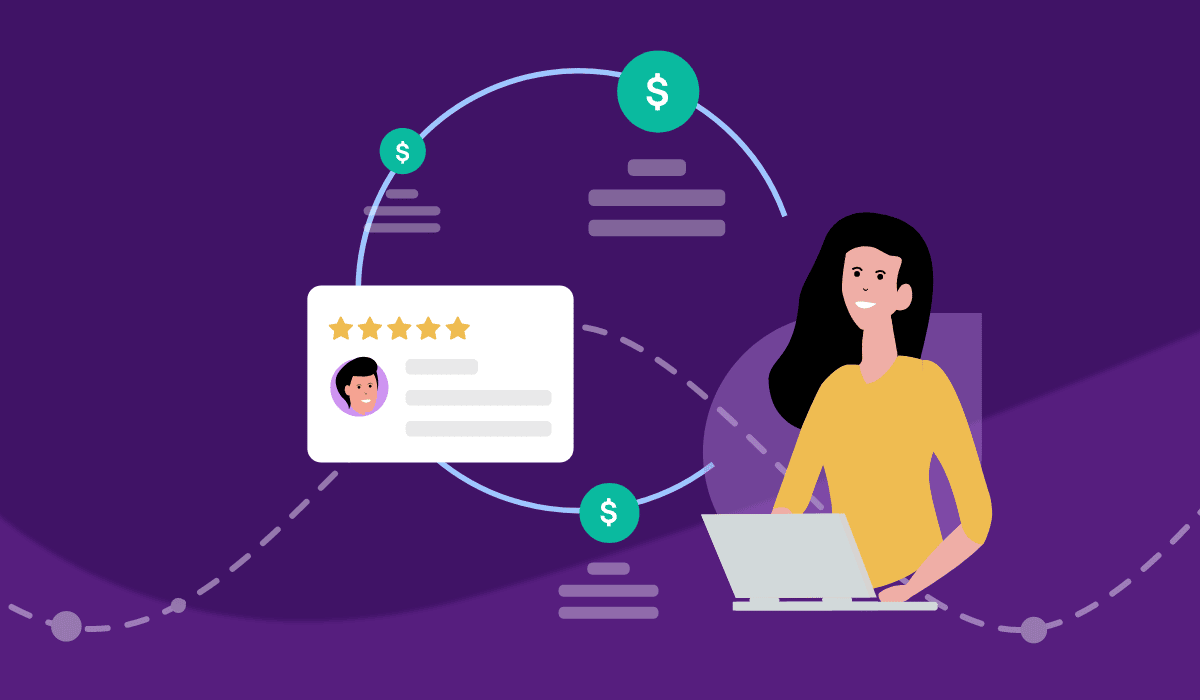As this digital shift continues to take over every industry, organizations must constantly ask themselves whether they’re doing enough to keep up with the times and stay ahead of the competition. As history shows us, companies that thrive – or continue to thrive – are those that continually adapt to the needs of their buyers, and are also able to anticipate the needs of tomorrow.
At the same time, B2B companies must also be mindful of the evolving needs of their own sales organization, and occasionally seek out new ways to improve, optimize and accelerate the digital selling process.
As a sales, revenue, or operations leader, one of your primary roles is to remove friction from the sales process so sellers can sell more easily, and so customers are more likely to do business with you.
To help you do that, we present to you our four key pillars for successful digital selling.
1. Enabling sellers to quote accurately and quickly
Many B2B sales teams underestimate the impact of speed on their ability to close deals. When a sales rep takes hours or even days to provide a comprehensive price quote or proposal, they lose valuable momentum with their customers.
As the saying goes, time is money. So how can you reduce the amount of time required to send sales quotes and proposals?
According to our 2021 Benchmark Report for Revenue Leaders:
- 84% of SMBs that use a CPQ are able to send a quote within 30 minutes, compared to only 57% of those that don’t.
- 95% of SMBs that use a CPQ are able to send a proposal within one hour, compared to only 56% of those that don’t
- 90% of enterprises that use a CPQ are able to send a proposal within one hour, compared to only 43% of those that don’t.
Adopting CPQ software is not only one of the most powerful ways to accelerate the digital selling process, but it’s also the most effective way to ensure the accuracy of quotes and proposals.
A best-in-class CPQ will have a built-in sales playbook that guides sellers, via an intuitive series of questions, to make the most strategic pricing decisions. With the help of preconfigured pricing rules, automated discount-approval workflows, and real-time syncing with your CRM, they can avoid making costly errors and easily adhere to established sales strategy.
In addition to empowering your sales team, a CPQ enables your sellers to provide customers with accurate price quotes in a fraction of the time it takes your competitors to do so – earning the trust of your buyers, establishing credibility, and increasing their likelihood of making a purchase.
Sendoso found that by adopting DealHub solutions, they’ve been able to create accurate sales proposals in less than 10 minutes, reduce quoting and contract errors by 95%, and increase average deal size by 15%.

2. Delivering right-time experiences
Whether buying a pair of shoes online or purchasing new software for their company, people have become accustomed to seamless, highly personalized, and low-friction buying processes. However, B2B companies have generally not managed to match the intuitive buying experiences provided by B2C companies like Amazon, Expedia, and Uber.
So how can you provide them with a smooth, effortless buying experience that improves the odds of closing the deal? By ensuring they’re always encountering the most relevant information at the most relevant point in their journey – what we call right-time experiences.
Choosing the right technology cements your ability to accomplish this, and it starts with CPQ software. A modern CPQ tool will ensure that your product catalog is always up to date, that you can instantly deliver information to customers in their preferred format, and that you can easily make quote adjustments to respond to customer needs in real-time.
How else can you deliver right-time experiences during the digital selling process?
- By providing highly relevant sales and marketing collateral at the appropriate stage of the sales process
- By establishing a single source of truth for evolving deal information (like products, pricing, quantities, and discounts)
- By sharing and collaborating on sales documents in one central place
This kind of personalized and engaging experience is made possible by a digital sales room proposal that can be automatically generated by your CPQ. This DealRoom reflects the current status of your deal at any given time. It’s a place where both buyers and sellers can check in for the most up-to-date information and deal status.

3. Enabling cross-team collaboration
The more complex a deal, the more stakeholders tend to be involved. According to Gartner, B2B deals involve an average of 11 stakeholders – and that’s just on the buyer’s side. This typically includes representatives from the C-suite, Finance, Legal, and of course, the department making the purchase.
The involvement of multiple stakeholders is a major friction point for many sales organizations, and multiple sign-offs and delays have the potential to stall deals, sometimes indefinitely. When it comes to cross-team collaboration, here are some of the common impediments to closing deals:
- Complications arising from quoting errors or inaccuracies
- Negotiations around terms and conditions
- Issues related to discount approvals
- Unnecessary back-and-forth communications
- The need to modify quotes, proposals, and contracts
Greater alignment and communication between stakeholders will remove a great deal of friction and make it easier for your sales team to sell. But how can you make that happen?
For one, you can bring buyers and sellers together within a collaborative digital workspace – a DealRoom – so they can collaborate around deals and documents, and do so based on the most accurate and up-to-date information. With real-time notifications about buyer engagement, sellers can also stay on top of each deal, prioritize opportunities, and strategize how best to follow up and move each deal forward
Internally, automatic syncing between your CPQ and CRM will provide a single place for everyone in your organization to keep track of deals and customers, manage subscriptions, and plan for renewals, upsells, and cross-sells. And automated approval workflows will accelerate internal collaboration and make it easier to get deals signed off. What would normally take days of back-and-forth can be accomplished automatically, and potentially within minutes.
4. Leveraging actionable insights
Most businesses understand the potential value of customer, sales and revenue data. The challenge is how to actually manage and leverage this data in order to sell more effectively and achieve greater revenue.
In most cases, they are impeded by one of two things:
- Difficulty collecting data across the customer journey – which often results from a lack of proper tools, or using tools that don’t communicate with one another
- Not knowing how to interpret the data or how to use it in an effective, measurable way
If you’re not using data to assess and improve your digital selling process, or feel you could be doing a better job of it, here’s what you need to know…
Capturing actionable insights and using them to optimize your sales strategy can be the difference-maker when it comes to meeting sales quota, hitting revenue targets, and edging out the competition.
Case in point: with DealHub’s CPQ platform, you can easily configure, implement and test multiple pricing strategies, with no additional coding required. The outcome? Insights that enable you to continually refine your pricing and digital sales strategy – and potentially achieve massive revenue impact.
In addition, managing buyer/seller interaction within a digital DealRoom provides you with real-time buyer intent data that act as “digital body language”. For example: when a buyer shares an incoming DealRoom proposal with their own organization, you can detect who else is on their buying committee, how engaged they are, and what content they’re engaging with. This way you can discover potential bottlenecks and identify opportunities for other stakeholders to get involved or provide guidance.
Turn digital selling into a competitive advantage
Countless factors and decisions contribute to a successful sales strategy. But by understanding these four pillars and implementing smart tools and processes in service of them, you can:
- Increase the success rate of quotes and proposals – by enabling greater speed and accuracy
- Make it easier for buyers to buy from you – with the injection of right-time experiences
- Boost sales productivity and close deals faster – through greater collaboration with teams and stakeholders
- Improve the seller experience and optimize revenue achievement – with actionable insights
Ready to create one fluid sales motion?
Check out our new integration with Microsoft Dynamics 365 for Sales



